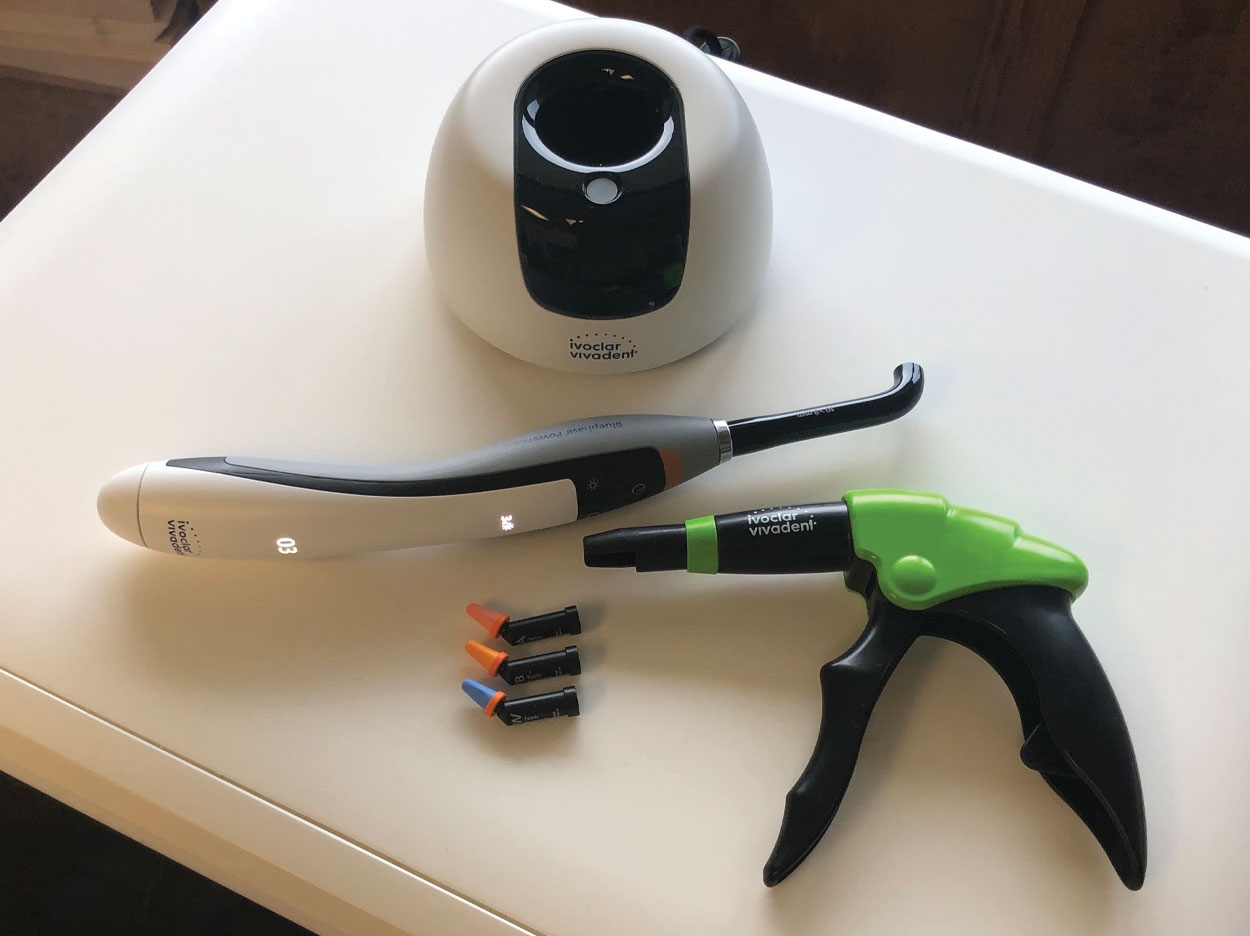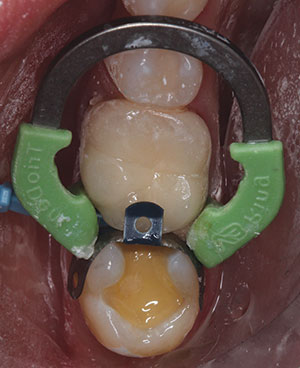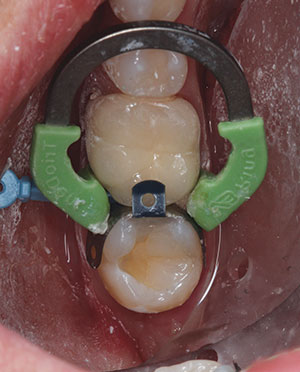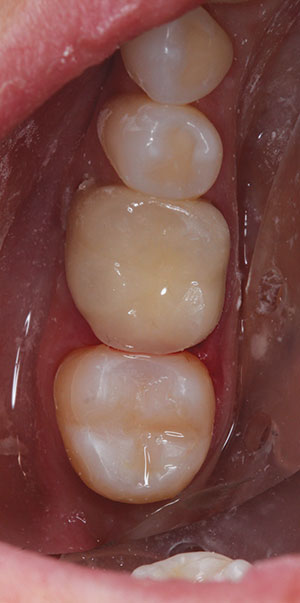
Direct resin restorations have become the treatment cornerstone for the general dentist’s office. The financial health of a practice can revolve around each practitioner’s ability to place them efficiently. The reputation of the office can also be negatively affected if the dentist cannot deliver a beautiful, long-lasting, and pain-free filling. These are all potential pitfalls when one worries more about speed and cost rather than quality.
Dental material companies realize this, and they seek to evolve their products to enhance the process. During the past 50 years, there have been a series of small steps that have added up to a change in the approach to direct resin restorations. But now we can reap the rewards of rethinking the vital process with a clean slate, speed, aesthetics, and techniques. The entire procedure has been looked at without the shackles of the past.
The 3S PowerCure System (Ivoclar Vivadent) has been developed to help the general dentist deliver the highest quality of care to his or her patient with a simple and straightforward workflow.
Let us look at a clinical case in which the system’s components are used to create a beautiful restoration in an efficient manner.
The patient presented for a re-care visit. Radiographs were taken, and interproximal decay was noted on her right mandibular second molar. The finding was discussed, and the patient gave consent to treatment.
 |
| Figure 1. The components of the 3S PowerCure system (Ivoclar Vivadent). |
 |
 |
| Figure 2. Pre-op picture of a failing resin restoration in a mandibular right second molar. | Figure 3. Uncured IVW PowerFlow (Ivoclar Vivadent) in place. The transparency allows one to visualize the adaptation. |
 |
 |
| Figure 4. Cured IVW PowerFlow is shown in place. The Assencio technology changes the opacity of the material as it cures. | Figure 5. The final restoration after finishing with OptraPol (Ivoclar Vivadent) points. |
For the majority of procedures in my office, I will utilize the Isolite for isolation. The foundation of success for direct resin restorations is isolation. Risk of sensitivity and abbreviated lifespan of the restoration are potential side effects of trying to cut corners in this area. The failing resin restoration and the decay were removed. The preparation was completed with margins on sound enamel. A sectional matrix and wedge were placed and adapted. The sectional matrix helps deliver a restoration with strong contacts and proper emergence.
My preference is to do a selective etch when bonding. Research and experience has demonstrated that this method decreases the chance of sensitivity and produces a stable, optically pure margin. Adhese Universal (Ivoclar Vivadent) is my preferred bonding agent due to its excellent track record and its frugal delivery system. With all bonding agents, the directions need to be followed to minimize sensitivity. Adhese Universal is scrubbed into the tooth, air thinned, and cured prior to the next step. Tetric PowerFlow (Ivoclar Vivadent) is then applied to the preparation. This material is available in 3 shades (IVA, IVB, and IVW) to cover the spectrum of tooth shades existing in patients’ mouths. In this particular case, since the patient’s dentition was on the light side of the VITA spectrum, IVW was utilized. IVW is indicated for deciduous teeth, bleached teeth, and shades A1/B1, due to its blending ability. A benefit of the PowerFlow chemistry is the Assencio technology. As one places the material, one will notice that it is somewhat transparent, enabling a person to confirm the adaptation and if any air bubbles have been incorporated. Being a flowable, it will self-level. Then, as one applies a curing light, the translucency decreases, creating a smooth, opaque result on which one can place the top layer.
The restoration can now be completed by capping it off with a layer of Tetric PowerFill (Ivoclar Vivadent). As with the PowerFlow, this family of products can be cured in 4-mm increments, substantially saving the number of layers. This is a significant decrease in overall treatment time for restorations. Ivocerin enables this increased depth of cure while also instilling stress relief into the cured product.
The curing light developed for the system also brings large efficiency benefits to the table. Previously, each layer of the restoration would require 10, 15, or even 20 seconds of curing. One may think it is just a few seconds, but, over the course of a long day in the operatory, extra seconds quickly add up to extra hours. The BluePhase PowerCure enables curing 4-mm layers in 3 seconds—a substantial time savings with no downside.
Materials, equipment, and technique have all been redesigned from a clean slate. This allows Ivoclar Vivadent to provide efficiency with these vital restorations that was previously out of reach.
For more information, call Ivoclar Vivadent at (800) 533-6825 in the United States. In Canada, call (800) 263-8182.
Dr. Gardell graduated from the New York University College of Dentistry in 1989 and has a technology-based practice with an emphasis on aesthetics in Stamford, Conn. CEREC has been in use in the office since 2005. Galileos was added in 2010. He holds a faculty position with cerecdoctors.com and is an instructor for the CEREC Accept Program. He has been involved with testing for various manufacturers of restorative and implant products. He has authored articles and lectured on topics such as integration of technology in the dental office, materials, orthodontics, and restorative and implant dentistry.



